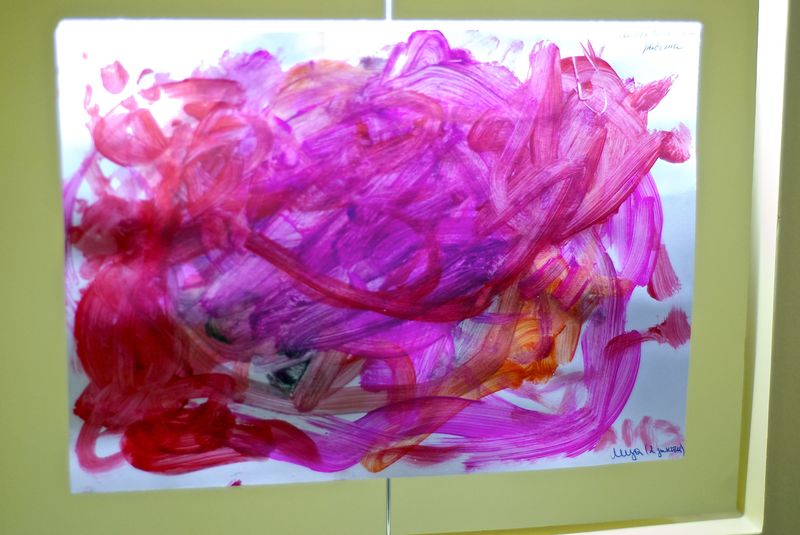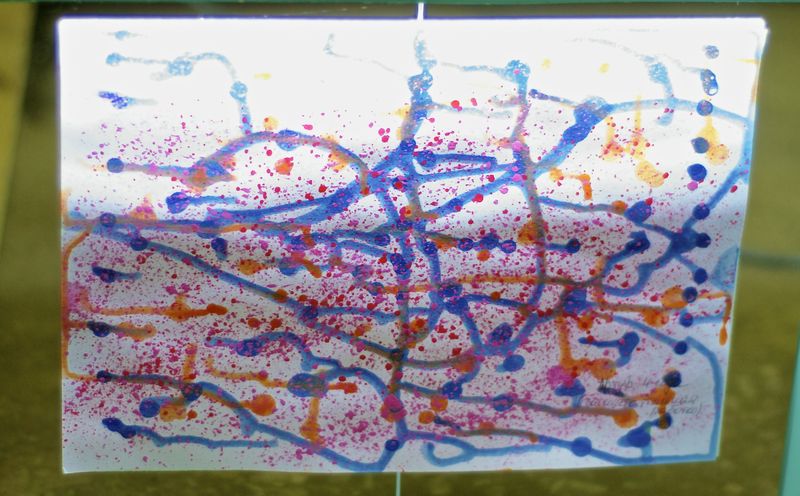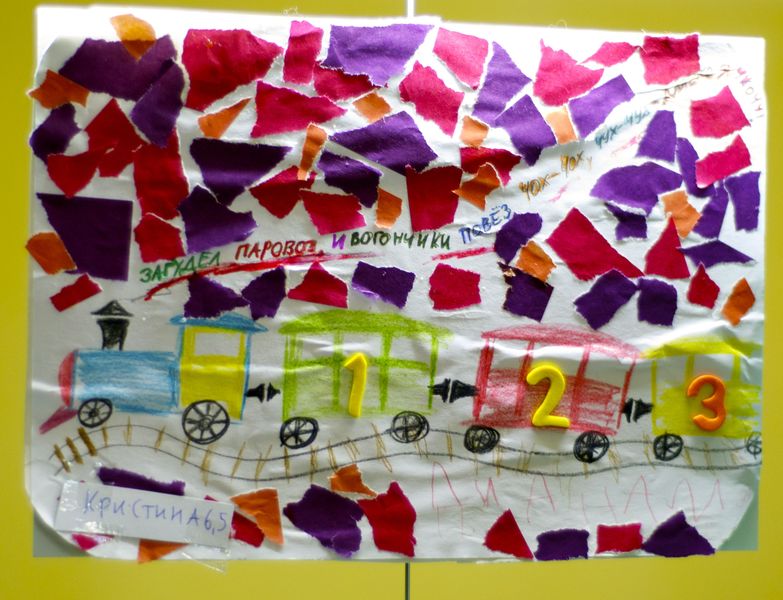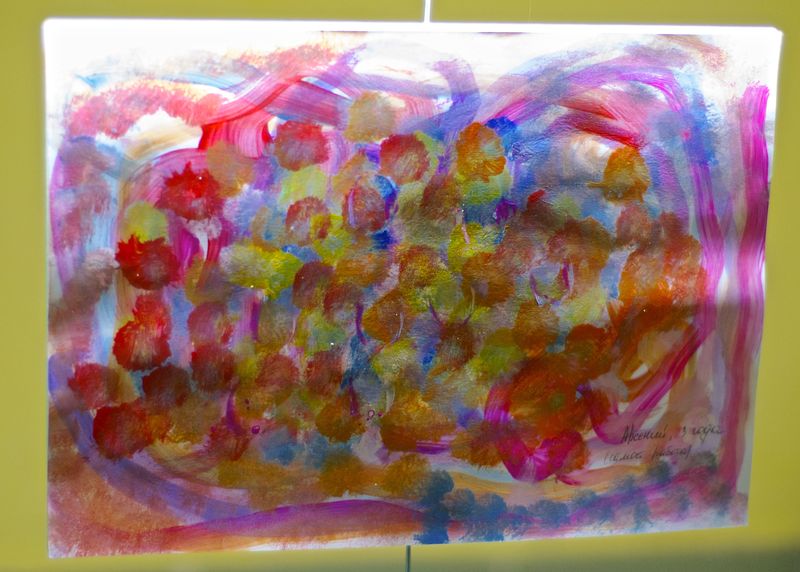Within the framework of Second Kiev Festival of alternative art “Pavlov fest” pupils of our kindergarten presented a stand, full of unique and very unusual works. By using different methods and techniques of art therapy each child with autism could show his/her art skills as well as open some secrets of inner world. Our specialists explain how and why such works were made and what do they show us.
 {/webgallery}
{/webgallery}1st drawing – made by Lisa – she used 3 techniques of art therapy: 1) painting with strokes, 2) rolling color drops, 3) retouching paint using glass applicator; during the process of drawing the child was given freedom of choice – starting with color ending with techniques. With this drawing one can understand emotional condition of autistic child, at the beginning she used purple color which means that the child was excited, in the process of drawing she started choosing less intensive colors, which means that she calmed down.
 {/webgallery}
{/webgallery}2nd work – such techniques as elements of decoupage, application sticking of different grains, modeling plasticine were used. All together these techniques are effective for a child because change of activity does not lead to apathy as well as concentrates attention, which is one of many factors in efficient work with autistic children.
 {/webgallery}
{/webgallery}3rd work – “rolling color drops” and painting with glass applicator technique was used. This drawing shows that the child started to put blue prints of the same type (which can be seen in the right part of the drawing) – which means that the child is unsociable and stereotypic. After showing the child technique of rolling color drops he continued to put blue prints but all over the canvas. This proves that use of more than one technique helps slowly, but confidently remove stereotypic behavior of the autistic child
 {/webgallery}
{/webgallery}4th drawing – application sticking of colored paper technique was used together with using additional elements. When making the drawing, the use of additional elements (in this case – sticking colored numbers made from foam material) helps to solidify knowledge. Numbers were used – the child was offered to pick favorite color. Proceeding from this choice, we could understand whether to solidify knowledge or teach something new. Art therapy is frequently using this technique if the child refuses for example to learn letters, figures, and numbers on the lessons.
 {/webgallery}
{/webgallery}5th drawing – painting with strokes technique was used. This technique helps child to concentrate to hold brush properly; making strokes stimulates muscles of the hand as well as general tone, which further would help the child to adapt to holding a pen properly
 {/webgallery}
{/webgallery}6th drawing – completely independent work – the child was provided only with materials. It is very important in art therapy to find out which color is the favorite one (the one is most frequently used). Knowing psychology of the color you can find out whether the child is calm, aggressive, unsociable, irritated etc. in this particular case the drawing shows that the main color is blue which means that the child is willing to be calm. But “insertions” of purple color mean that the child is pretty much excited and very sensitive. Green color mostly means that in this very moment (moment of drawing) the child misses parents’ support (mostly mother’s).

